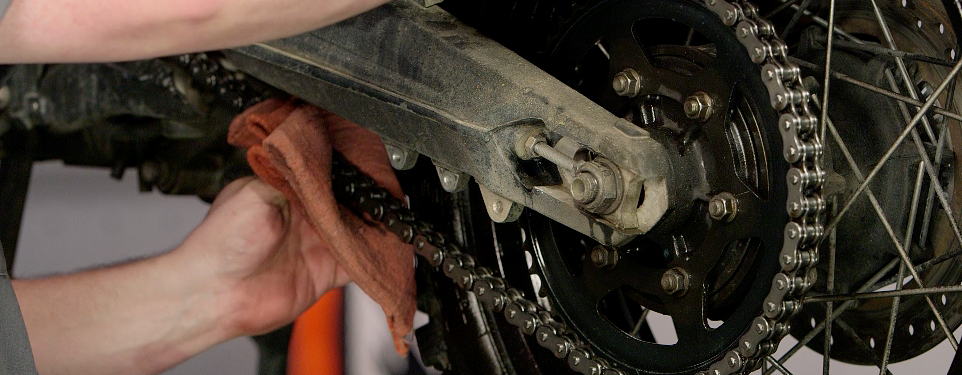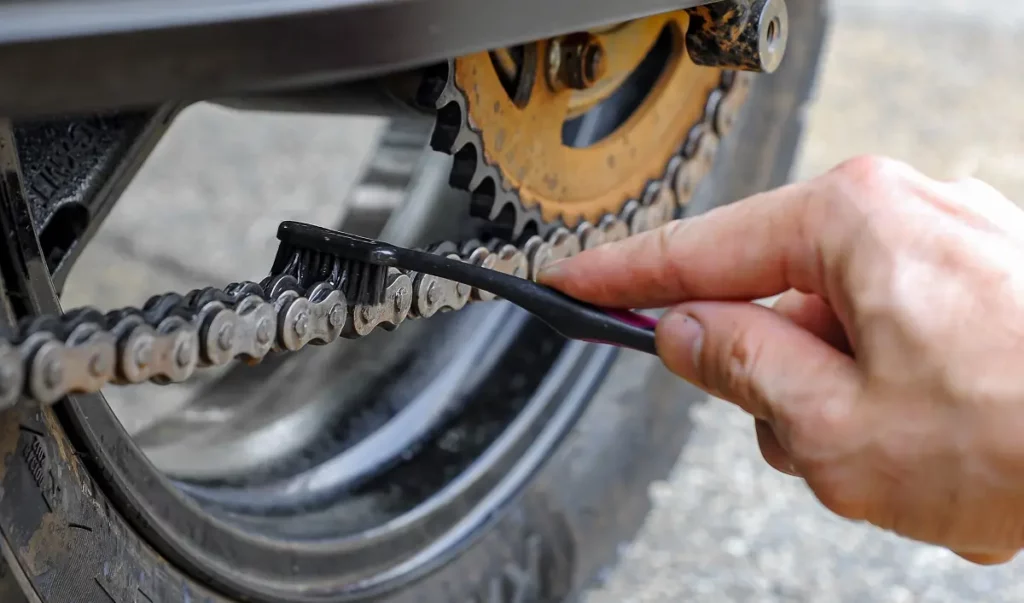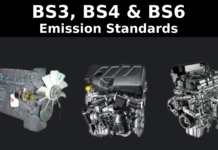If you want a smooth, efficient, and long-lasting ride, it’s important to maintain your bike chain regularly. Over time, dirt, debris, and wear can cause the chain to lose lubrication, leading to poor performance, increased friction, and even premature damage to other bike components. Regular cleaning, lubrication, and tension adjustments not only improve your riding experience but also extend the life of your chain and drivetrain. In this guide, we’ll walk you through simple yet effective steps to keep your bike chain in top condition, ensuring a hassle-free and enjoyable ride.
How to Maintain Your Bike Chain: Cleaning Tips

Mud, dust, and old lube build up over time, turning your chain into a gritty mess that wears out faster. Cleaning it isn’t hard just grab a rag, a chain cleaner tool (or an old toothbrush), and some degreaser. Wipe off the big gunk first, then apply the degreaser and scrub each link. I like to run the chain through the pedals backward while brushing it’s oddly satisfying watching the grime melt away. Rinse with water (gently, no pressure washers!) and let it dry completely. When you maintain your bike chain properly, you’ll notice an immediate improvement in performance and ride quality.
Best Lubricants to Maintain Your Bike Chain
Wet lube is awesome for rainy, muddy rides it sticks like glue and keeps things smooth. But if you’re riding in dry, dusty conditions, go for a dry lube it won’t attract as much dirt. I’ve even tried wax-based lubes lately, and they’re a game-changer for keeping the chain clean longer (plus, they smell way better than that old garage oil stench). Match your lube to your riding style and weather it’s like picking the perfect playlist for your ride.
Lubricate Properly
Drenching your chain in oil attracts every speck of dirt like a magnet, gumming things up fast. Instead, apply a thin, even layer drip one drop per link while spinning the pedals backward. Let it sit for a few minutes, and then wipe off the excess with a clean rag.
Pro tip: I keep a lube rag in my toolkit just for this it’s my little secret to a chain that purrs instead of squeaks.
How to Inspect and Maintain Your Bike Chain for Longevity

A worn-out chain not only affects your ride but also causes damage to your gears. Check it every month or so with a chain wear tool (they’re cheap and easy to use). Slide it into the links if it drops in too far, your chains stretched and needs replacing. No tool? Use a ruler: measure 12 links (from pin to pin) if it’s over 12 ⅛ inches, its toast. I once ignored a stretched chain, and my cassette looked like a shark attack victim doesn’t make my mistake!
Adjust Tension if Needed
Too tight, and you’re grinding your drivetrain into an early grave. Aim for about ½ inch of up-and-down play at the chain’s midpoint. Use your bike’s rear axle adjusters to tweak it, and keep it snug but not banjo-string tight. I learned this the hard way after a loose chain derailed mid-ride cue the roadside swearing session.
Store Your Bike Smartly

How you store your bike matters more than you think. Leaving it outside in the rain or a damp garage invites rust to crash the party. Hang it up indoors if you can, or at least cover the chain with a light lube layer before long breaks. I’ve got a buddy who swears by wrapping his chain in an old sock during winter quirky, but it works! A little TLC in storage keeps your chain ready to roll when you are.
Conclusion
If you regularly maintain your bike chain, you’ll enjoy a smoother ride, better performance, and fewer repairs in the long run. Regular cleaning, proper lubrication, and correct tension adjustments help prevent wear, reduce friction, and improve overall performance. By following these maintenance steps, you can avoid costly repairs and enjoy a hassle-free riding experience. Make chain care a part of your routine, and your bike will reward you with better speed, efficiency, and durability on every ride.
FAQs
Q1. How often should I clean and lubricate my bike chain?
Ans. It depends on how often and where you ride. For regular road biking, clean and lubricate your chain every 150–200 km. If you ride in muddy or dusty conditions, do it more frequently, after every few rides.
Q2. What type of lubricant should I use for my bike chain?
Ans. Use dry lube for dry, dusty conditions and wet lube for rainy or muddy rides. Avoid using household oils like WD-40, as they attract dirt and don’t provide lasting lubrication.
Q3. How can I tell if my bike chain needs cleaning?
Ans. If your chain looks greasy, has visible dirt build-up, makes noise, or feels rough when pedaling, it’s time for a cleaning. A clean chain should move smoothly and quietly.
Q4. What tools do I need to clean my bike chain?
Ans. Basic tools include a rag, a chain cleaner tool or an old toothbrush, bike-safe degreaser, and a chain lubricant. For deeper cleaning, a dedicated chain cleaning device can help.
Q5. Can I use a pressure washer to clean my bike chain?
Ans. No, high-pressure water can force dirt and degreaser into sensitive components, causing rust and wear. Instead, use a gentle rinse or a damp cloth to remove excess degreaser.
Q6. How do I properly lubricate my bike chain?
Ans. Apply one drop of lubricant per link while slowly rotating the pedals backward. Let it soak in for 5–10 minutes, then wipe off the excess with a clean rag to prevent dirt build-up.
Q7. How do I check if my bike chain is worn out?
Ans. Use a chain checker tool to measure wear. If the chain has stretched beyond 0.5–0.75%, it’s time to replace it to avoid damage to the cassette and chain rings.
Q8. What happens if I don’t maintain my bike chain?
Ans. A dirty, dry, or stretched chain increases friction, wears down gears faster, and makes pedaling inefficient. It can also snap unexpectedly, leading to costly repairs or safety risks.
Q9. Should I remove my chain to clean it?
Ans. You can clean it while on the bike using a degreaser and brush. However, for deep cleaning, removing it and soaking it in degreaser can be more effective.
Q10. Can I extend my bike chain’s lifespan?
Ans. Yes, regular cleaning, proper lubrication, and avoiding cross-chaining (riding in extreme gear combos) will help your chain last longer and keep your ride smooth.








